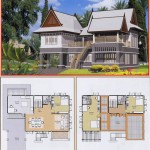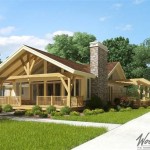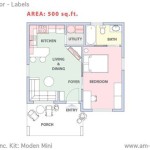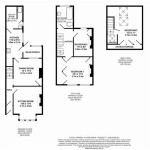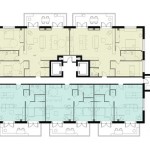Essential Aspects of House Plans for Building on a Hillside
Building a house on a hillside can be particularly challenging, as there are many factors to consider for safe and functional construction. Here are essential aspects that should be addressed when creating house plans for hillside development:
1. Site Evaluation
A thorough site evaluation is crucial to understand the hillside's conditions and limitations. This includes analyzing the soil type, slope steepness, drainage patterns, and any potential geological hazards. Based on this evaluation, architects and engineers can determine the appropriate building methods and foundation systems.
2. Foundation Design
The type of foundation required for a hillside house will depend on the slope and soil conditions. Common foundation systems include:
- Slab-on-grade: Suitable for gentle slopes with stable soil.
- Crawlspace: Elevates the house above the ground, providing access for utilities and creating a buffer against moisture.
- Full basement: Excavates a basement into the hillside, potentially offering additional living space and protection from the elements.
3. Grade Leveling and Drainage
Grading the hillside involves altering the slope to create a level building site. This ensures proper drainage away from the house. Retaining walls and drainage systems may be necessary to prevent erosion and water damage.
4. Architectural Design
The architectural design of a hillside house should complement the slope and terrain. Considerations include:
- Stepped levels: Creating multiple levels allows for a gradual ascent up the hillside, optimizing space and views.
- Terracing: Terraces provide flat spaces for outdoor areas, gardens, or additional rooms.
- Orientation: Positioning the house to maximize natural light, views, and minimize solar heat gain.
5. Landscape and Hardscape
Landscaping and hardscaping elements play a crucial role in stabilizing the hillside and enhancing the aesthetic appeal. Retaining walls, terraces, and vegetation can prevent erosion and create usable outdoor spaces.
6. Utilities and Infrastructure
Careful planning is required to ensure the availability of utilities and infrastructure, such as electricity, water, gas, and sewage. Underground or above-ground lines may be necessary to connect the house to essential services.
7. Access and Parking
Hillside houses often have unique accessibility requirements. Driveways, walkways, and stairs should be designed to safely navigate the slope and provide convenient access to the house.
Conclusion
Building a house on a hillside requires a comprehensive approach that considers the geological, architectural, and practical challenges. By carefully planning and addressing these essential aspects, homeowners can create beautiful and functional hillside homes that take advantage of the unique opportunities of their elevated settings.

Steep Slope Home Designs House Plans 3 Jpeg 480 398 More Houses On Edge Dream Design Architecture Modern

Hillside And Sloped Lot House Plans

Hillside And Sloped Lot House Plans

Computer Vs Hand Hillside House Sloping Lot Plan Plans

Hillside House Plans Home Floor And Designs

Hillside House Plans With Garages Underneath Houseplans Blog Com

Hillside House Plans With Garages Underneath Houseplans Blog Com

Hillside House Plans Home Floor And Designs

Hillside And Sloped Lot House Plans

Modern Hillside House Plans With Garages Underneath Houseplans Blog Com



